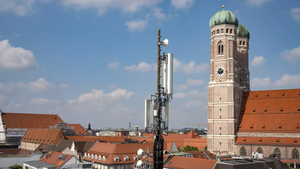January 23, 2020

As Chinese rivals ramp up their filings and shout loud about their portfolios, wireless and video technology patents specialist InterDigital has taken what looks like the bold step of unveiling its IPR (intellectual property rights) pricing structure in an effort to become a more transparent company.
Taken in isolation, such a move is to be applauded, providing some insight into what can often appear to be a byzantine market for mobile device IP license payments that is understood almost exclusively by its participants, a phalanx of lawyers, and the smartphone vendors that have to write the licensing checks, but few others.
InterDigital's Chief Communications Officer Patrick Van de Wille says it's possible, given time and a forensic understanding of patent and financial filings, to figure out what the company gleans in IPR licensing revenues from smartphone manufacturers, but publishing the details makes it easy to check and will avoid any misunderstanding or miscalculations.
And what InterDigital has published makes for interesting reading: A $500 smartphone "that implements 3G and 4G standards, as well as Wi-Fi and HEVC video technologies" would generate licensing fees for InterDigital of $1.15: You can see the breakdown of that sum on this page.
(Note that while the company is best known for its wireless patent licensing, it also holds a host of video IPR following its acquisition of Technicolor's patent licensing business in 2018. It also acquired Technicolor's Research & Innovation unit in June 2019 -- see Technicolor to Unload Research & Innovation Unit .)
All well and good.
The real story here, though, is why InterDigital is becoming more transparent and sharing information about its patent portfolio and pricing now. Why not last year? Or next year?
To me it seems obvious: InterDigital feels threatened by the recent surge in patent filings, applications and awards by/to Chinese companies, Huawei in particular, but also ZTE. Both Huawei and ZTE have been shouting loudly about their growing patent portfolios in recent years -- Huawei in particular has been aggressively pursuing IPR revenue opportunities -- and it's starting to grate with many in the industry, especially as there are many metrics by which a patent portfolio can be judged -- everyone has their own views, of course… (Here is a good indication of how complex the situation is -- Who Rules 5G Patents? It Depends How You Ask.)
But it's obvious to me that, with the IPR sector's status quo unsettled, the "old guard" have got the hump and feel the need to redress the balance. Or fight back, in one way or another.
One way to do that is to position your company as the good citizen, which is what InterDigital is doing with its transparency campaign. And that's a smart move: At the very least it will get people asking the other IPR players to follow suit and maybe fuel further discussion about the various rates that different players command. According to InterDigital, Nokia and Ericsson's respective patent portfolios will generate a bit more per device, Qualcomm will get considerably more, while others will command less.
Another way to do that is to launch legal proceedings: InterDigital is currently engaged in a court battle with Huawei in the UK (neutral ground, the company says).
It's these legal battles that the industry sees and doesn't much care for (rightly or wrongly).
But such battles look likely to intensify and ultimately involve more and more companies. Just look at Dali Wireless: In the past few weeks it has set its lawyers on both Corning (which now owns wireless networking specialist Spidercloud, the unit with which it has issue) and JMA Wireless. Some would say this is an act of desperation by a company struggling to make its mark in the industry: Others would argue it has every right to protect its R&D investments and IPR efforts.
The 5G era, especially the associated introduction of disaggregated and cloud-native technologies, is set to make the IPR minefield bigger and harder to safely navigate. As operators deploy alternative, multivendor network architectures, the prospect of figuring out whose IPR might be in an OpenRAN stack or a virtual routing/optical stack could get tricky. And litigative.
As ever, it's likely the lawyers are the only ones certain to emerge from the battleground as winners.
— Ray Le Maistre, Editor-in-Chief, Light Reading
Read more about:
AsiaYou May Also Like










